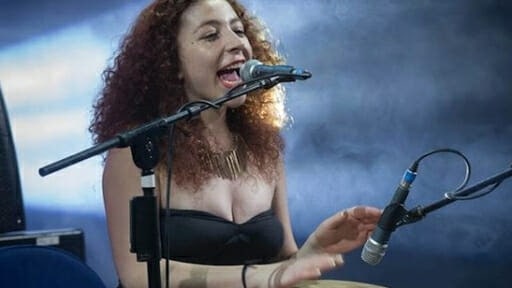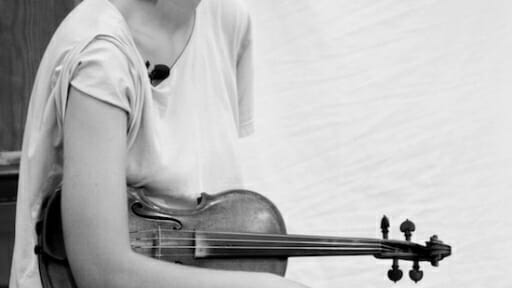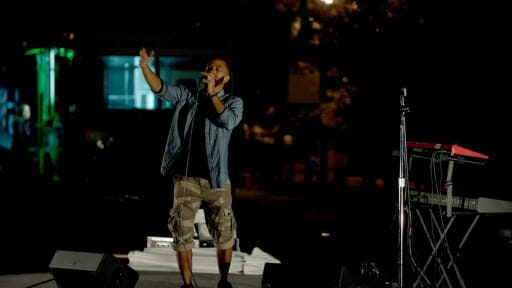OneBeat Labs:
Musical Identity & Storytelling
Objectives: To learn how music can reflect and reshape our understanding of our personal histories, and how history has reflected and shaped the music we listen to. To discover our own personal, familial, community, and regional roots through storytelling, music and sound.
Critical Questions: What is the role of the migration and movement of people in the music that I hear? What can we learn about our history through examining our music? What is the music or the soundtrack of my personal history, or of my family’s history? What can we learn about our personal family or community history through storytelling and interviewing?
PART 1
Opening Activity: What do you think of when you think of home? Draw or write & discuss.
Discussion: What is diaspora? Diaspora is a scattered population whose origin lies in a separate geographic locale. Historically, the word diaspora was used to refer to the mass dispersion of a population from its indigenous territories. While the term was originally used to describe the forced displacement of certain peoples, “diasporas” is now generally used to describe those who identify with a “homeland”, but live outside of it.
Watch/Listen: Roots of the banjo
Excerpt of Justin Harrington TED talk (2:42-9 min)
Excerpt of Rhiannon Giddens talking about the banjo (1:54-3:01)
(Optional) Carolina Chocolate Drops performance clip
Write down 3 interesting things you hear or see.
Discussion: In this first video, Justin speaks about a mixture or melding of musical traditions that he explored as he considered his own cultural identity, and defined “folk” or “traditional” music for himself.
Q1: Why is the concept of “folk” important to Justin in this talk? What are the elements of “folk”?
Q2: What is your definition of your own individual “folk” or “traditional” music, food, dance, art form, or expression?
Q3: The idea of “folk” is also centered in community. What are the “folk” roots of your own community (however you define your community)?
Q4: How does the concept of diaspora play a role in this story?
Exercise: Create your own visual diaspora map.
Part 1: Talk about creating diaspora maps. Share a range of examples of different types of diaspora maps. (*Note for teachers: Talk about the possibility of not knowing where your family roots come from. Students can interpret “roots” in whatever way they choose, including addressing the unknown.)
Part 2: Create your own visual diaspora map of yourself, your family, or your community in duos. Start with visual maps that represent who you are and where you / your family comes from. Examples could include: geography, landscapes, food, people, music etc.
Extra / Homework (these second two examples are good options to show and discuss in class also):
- Bring in a song, sound or piece of music that makes you think of home (not necessarily a favorite song, sound or piece of music; but something that reminds you of your home or family)
- Watch this video & lesson about cumbia music and diaspora in Colombia, by Daniela Serna. Write down 3 interesting things you see or hear about cumbia.
- Watch excerpts of Adapting History by Dahlak Brathwaite. How is Dahlak using theater to explore music and cultural roots? Why is the concept of “adapting” important to Dahlak?
PART 2
Opening Activity: What is the most familiar or comforting sound you know? Discuss in pairs, then share with the group.
Discussion: Share the song, sound or piece of music you brought. Share why and how it reminds you of home. Make a class playlist.
Exercise: Bring a recording device for this exercise, if you have one.
Part 1: Ask for volunteers to share diaspora maps, or divide into pairs to share maps with one another. Comment on what you find meaningful about others’ maps.
Part 2: Select 3 elements of your visual map to turn into sound OR add three elements of sound, song or music to your maps. What will you select or add? How would you represent that element through sound? Record or find at least 3 audio clips to represent or add to your visual maps. (TIP: try to record or use at least 5 seconds of sound.) Make a sound bank of those recordings.
Part 3 (x-tra/advanced): Write a narration taking a viewer through your diaspora map or telling a short story about elements of your map. Record the narration or story, with the audio elements mixed in.
Students should have individual recording devices for this unit!
PART 1
Opening Activity: Interview practice.
Divide into pairs. Start by asking your partner a question. Any question! Practice responding to your partner’s answer with follow-up questions. Think of ways to dig deeper into their response with each question you ask. Give each student in the pair 3-5 minutes to be the interviewer, and 3-5 minutes to be the interviewee. How did it feel to be the interviewer? How did it feel to be the interviewee? Did you find out anything new about that person?
Reading/Discussion: Asking questions (excerpts), by Liz Lerman. Write down one or two questions or statements that stick with you.
Watch/Listen & Discussion: Anna & Elizabeth’s Ballad of Holland Island House. This is a piece of music & animation that came from a true story about a house in the Chesapeake Bay. What was this story about? What part of the story is meaningful to you? What did you hear in the music or sound that helped explain the story?
Exercise: In this unit, students will be asked to record a short story or interview. Begin by asking students to practice recording with their devices. Divide into pairs to practice recording & interviewing. Record your partner by repeating the interview exercise, asking them any question, then follow up by asking two more questions based on their response. Listen back to the recording together. Practice where you can hold the microphone or recording device when someone else is speaking.
Discussion / Writing: Who might you ask to tell you a story or be interviewed? Is there a particular story you would like to explore? Write down ideas for storytellers. List 3-5 questions that you might use to encourage your storyteller.
TIPS:
- Make sure the person you are talking to is comfortable recording their stories.
- Give the person some time to think about your question before asking for a response.
- Keep the words flowing by asking questions that will help someone else experience your Storyteller’s perspective.
- Be willing to ask for clarification or repetition if needed. It’s ok, too, to take a moment to think about what more you need to hear.
Exercise / Homework: Interview someone or record someone in your family telling a short story about a memory from their life. Add your own questions to follow up or add to their story.
Possible prompts (if students are having trouble with topics):
Tell a story about your home.
Tell a story about something that surprised you.
Tell a story about your first favorite song, or a favorite sound you remember from when you were young.
Tell a story about a favorite place from your childhood.
Tell a story about a time when you were really happy.
PART 2
Opening Exercise: Pick one word or phrase from the story you recorded and share with the class, out of context. OR (if you have not recorded a story yet), repeat the interview practice exercise by dividing into pairs, asking your partner any question, and following up to their response with two additional questions.
Watch/Listen (optional): City Scores: Knoxville storytelling project. Select a few videos & stories from this recent project and watch/read/listen. Discuss the combination of story, sound, song found in this project.
Exercise: Introduce Bandlab (or similar simple audio software). Demonstrate creating a “project” and uploading audio into Bandlab. (Possibly ask for a volunteer who has recorded a story to do so.) Model how to make simple cuts and edits to audio.
Ask students to upload their recorded stories into Bandlab.
Discussion: In pairs, listen to your recorded stories and interviews. Discuss how each student could edit their recorded audio into a piece that is 5 minutes or less.
Students should have individual recording devices for this unit!
This final week of the unit is dedicated to allow students to work on or finish either their diaspora maps or their storytelling projects.
Students are challenged with either:
a) making a simple edit of their recorded stories/interviews or
b) recording an audio version of their diaspora map
Students can practice two simple processes on Bandlab (or similar software) in their Maker projects:
- Making cuts and edits to an audio file
- Layering two audio tracks to add ambient sound, music or noise to an existing audio track
Work in duos or trios to come up with a title & cover image for each project.
Upload to a common space & have a few people present.







